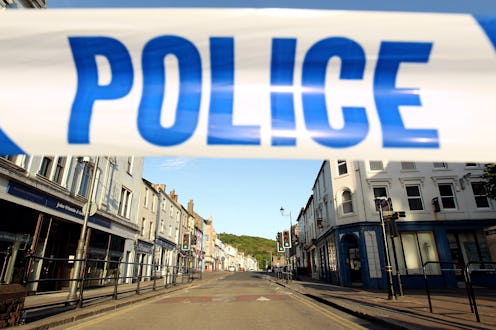News
Why Aren't More Police Fired After Shootings?
By now, you've probably heard the name "Christian Taylor" — yet another young, unarmed black person killed in an encounter with the police. Taylor was fatally shot in an Arlington car dealership, allegedly after driving his car through the front window. It's a familiar and sad story, a situation that seems like it could have been solved without a person being killed. And that's where the story gets interesting: The Arlington Police Department fired Officer Brad Miller for killing Taylor on Tuesday, and that's not always how these things go.
For anybody who's followed the Black Lives Matter movement, or keeps track of incidents of officer-involved shootings more generally, there's a very familiar phrase you tend to hear: "The officer has been placed on administrative leave." It's essentially a way for police departments to get cops who've been involved in fatal shootings off the streets for a while, shielding them from the rigors of public, on-the-job scrutiny, and in many cases allowing them to be paid for the time.
It's not always the case, obviously. In some recent instances in which video evidence has resulted in a murder charge against a police officer, like with Michael Slager in South Carolina and Ray Tensing in Ohio, cops have been fired outright. Both Slager and Tensing claimed that they shot because they feared for their life.
But so far, no such video of Taylor's death has come out. The dealership says it doesn't have interior security cameras, and Arlington police officers don't wear body cameras (which ought to change, like, yesterday). Considering Miller's rather par-for-the-course self-defense claim — that Taylor was ignoring orders and advancing towards him, making him fear for his life — it's kind of surprising to learn that he's already been cut loose. Usually, departments tend to stand behind their officers steadfastly in cases like these, so why the firing?
Luckily, the department's explanation, as detailed by The New York Times, helps shine a little light on things. Arlington police chief Will Johnson reportedly identified crucial mistakes in judgment made by Miller in the run-up to Taylor's shooting, which the department says put him in an avoidably dangerous, escalated situation. There are two major components to this: Miller's initial decision to enter the dealership without his veteran partner (Miller was a rookie cop still in training), and his confronting Taylor without an arrest plan in mind.
Basically, the department is divorcing the issue of whether Miller should be fired from the legal question of whether he had the right to kill Taylor in self-defense. They're arguing that, whether or not Miller felt he had to fire, and whether or not he was within his legal rights to do so, he created the fatal encounter himself through what Johnson described as "an environment of cascading consequences," according to the Times.
Of course, as impolitic as it may be to say, there's also the ever-present possibility that there are reasons for Miller's firing that aren't transparently clear from the outside. Initial media accounts (based on information from the authorities) defined what happened between Taylor and Miller as an "altercation," but the department has since made it clear that Taylor never actually came into physical contact with the cop, and was approximately seven to 10 feet away from him when he was shot.
If any other police departments are looking to learn something from this case, here's a realistic, painfully simple idea: body cameras on all officers. The fact that we may never get to see what actually transpired inside that dealership only inflames outcry, suspicion, and a sense of injustice. And in a hypothetical reality in which Miller did nothing wrong, the footage could've saved his job. Body cameras are beneficial to good cops; they're only a hazard for bad ones.
